Smriti Malhotra
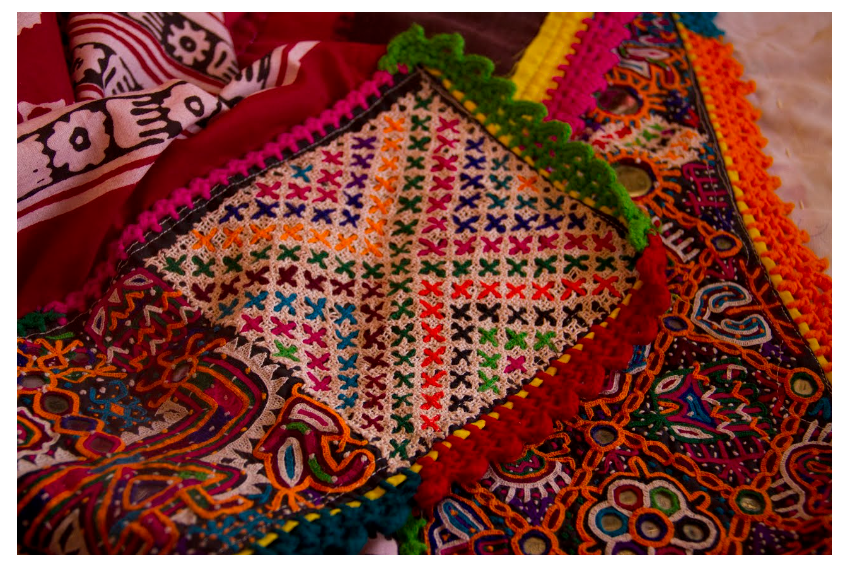
In the heart of Gujarat, where the vibrant hues of the state lies, a story of a unique museum conceptualised and run by the women embroiderers of the region called Hansiba Museum and Craft Resource Centre. Within its brick and mortar walls lies the sound of empowered women stitching new cultural tapestries onto clothes and pieces. Here, the nimble fingers of women of SEWA (Self Employed Women’s Association) conjure magic upon the fabric with the colorful threads. With the stroke of their needle, they embellish vibrancy into the pieces. The objects you spot in the museum are unlike any other, these are heirloom pieces that once belonged to these women. The Museum lies in Radhanpur, western province of Gujarat which opened to the public in the year 2012.
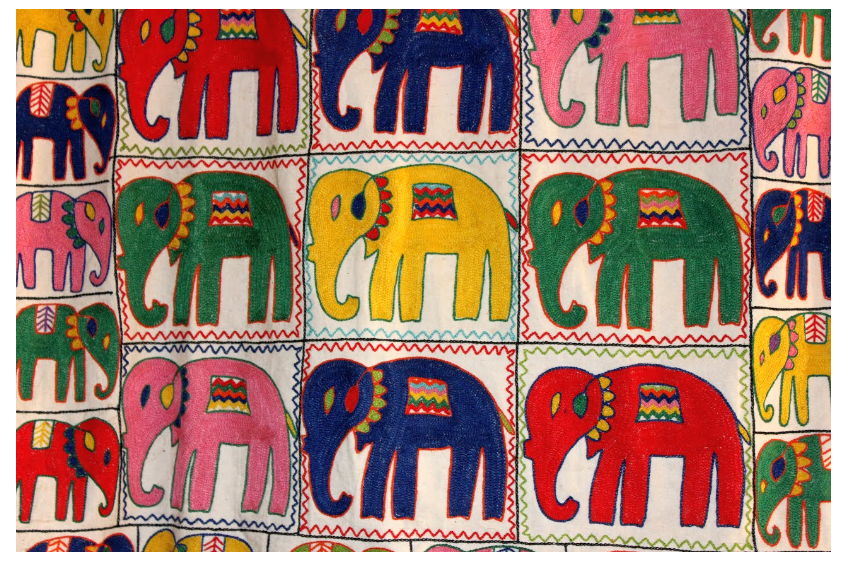
The museum is named after one such empowered woman of SEWA who knew 16 different stitches. She was a rebel and an inspiration who grew her own cotton, cultivated it, dyed it by herself and stitched the fabrics to perfection. She was a creator unlike any other, and that is exactly what the museum embodies. It embodies her spirit, her heirlooms, her resilience and her grit. The pieces that are housed as artefacts in the museum reflect the legacy of great traditional and personal art of these women. They have personal pieces of garments and adorations that have been passed down in generations, pieces that these women saw other women of their family once wear. The Museum is named after Hansiba, who was the oldest serving member of SEWA.
SEWA, the trade union based out of Ahmedabad, Gujarat aims at providing rights to informal working women of India, Established by Ela Bhatt in 1972, the organisation started the collective of bringing women artisans together to empower such artisans of the country as well as provide them with financial and creative agency over their work. SEWA found women to be highly skilled within the region, they could upscale any piece of clothing in minutes through their embroidery skills and stitches. The women were asked to be a part of the producer’s collective who then could pool their resources and directly sell the material made to customers and market it via SEWA’s network.
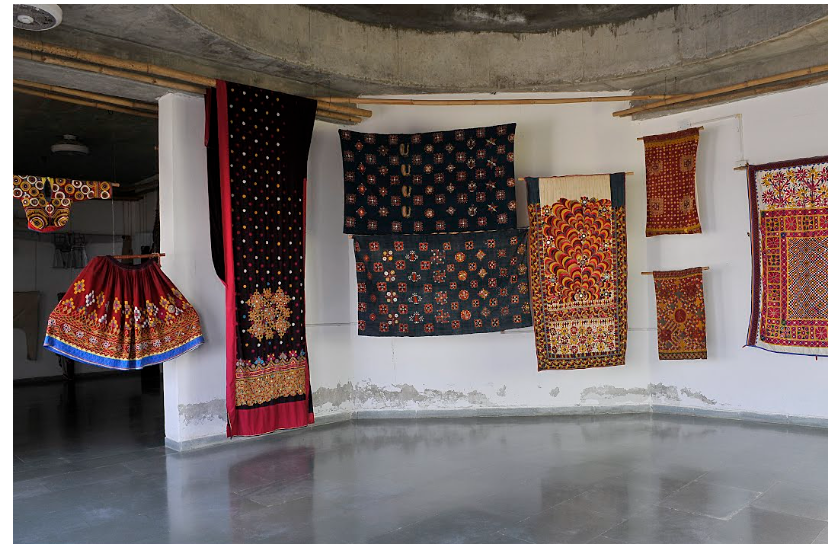
Women of SEWA and the Museum come from various communities in the region, some of them are Ahir, Rabari, Mochi, Harijan, Chaudhary Patel and many more. Each community has its own unique embroidery and craft language that is skillfully embedded and learned by the women and woven into beautiful fabric tapestries. The Hansiba Museums tells the stories of these veiled women, the battles fought, the ones which were won and the symphonies of triumphs. The museum is a repository of not just textile pieces but of the living and intangible stories of these women who can inspire many others.
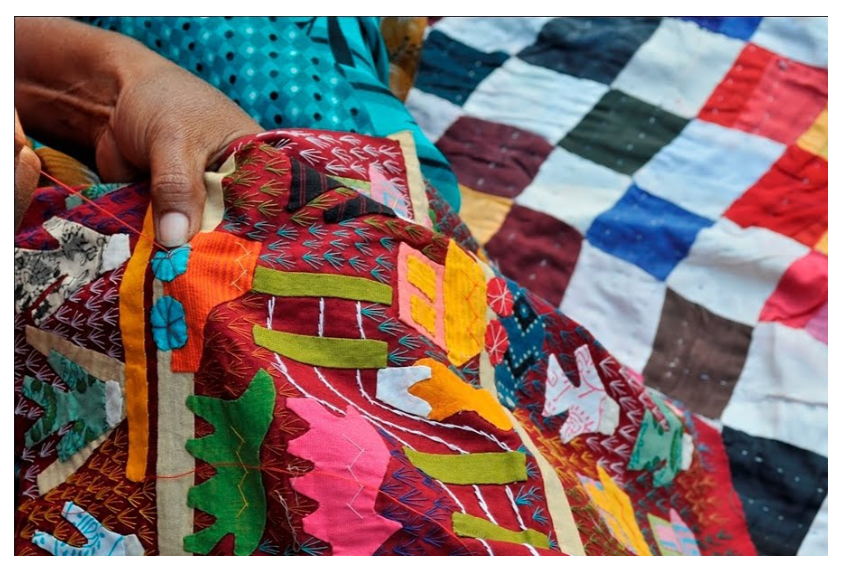
While the women from these communities originally only made and embroidered traditional pieces for themselves or their family, with changing demands, they started to embroider dupattas, kurtas and other items for the others to consume. In the midst of finding their new urban stitching language, they developed new stitches, colour palettes and designs.
Having about 1700 objects, around 240 are on display for the visitors, the pieces showcase the finesse and the creativity of these women. Every stitch, work, and piece is a masterpiece in its own accord. Besides these textile pieces, there are articles donated by the women of SEWA such as vessels from their daily lives such as copper utensils, water pots, bathing utensils and stoneware that the women use in their daily routines or have been used in their families for centuries. The purpose behind the museum is simple, to create a visual repository of the works of these empowered women and educate the visitors on the cultural heritage of the communities who have made them and the region.
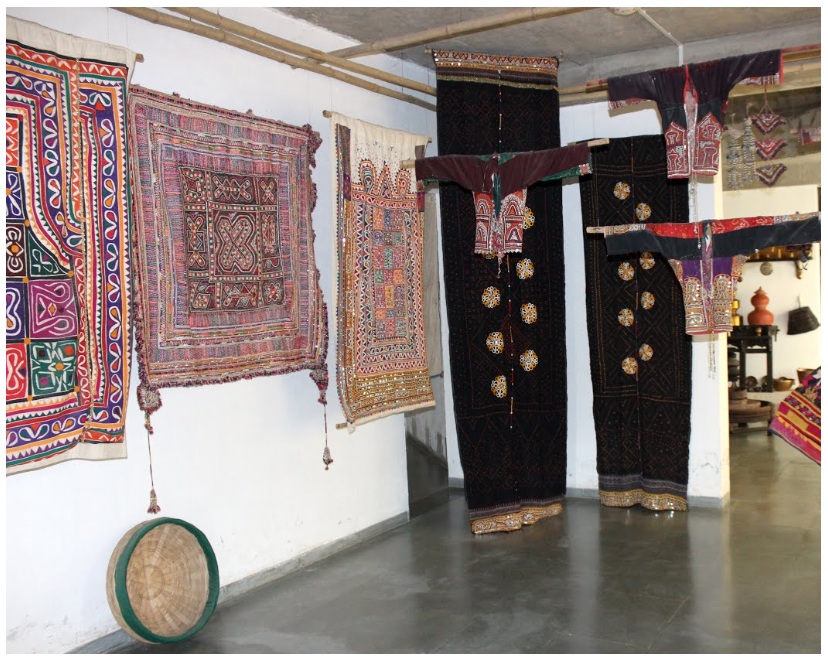
The Museum has been divided into sections as per the communities who have made the textiles, giving an insight into the world of the Ahir, Harijans, Chaudhary Patel, Kanabi Patel, Rabari, Darbar community, and more. In the Kanabi Patel community, the women like many other vernacular textile traditions sit together and stitch garments for the daughter’s marriage and dowry. In the Ahir community, the newly married couple’s rooms are decorated with heavily embroidered canopies and hangings which have many motifs signifying love and prosperity such as Lord Ganesha, Parrots and other creatures. The bride and the groom in the community also wear heavily embroidered Ahir pieces to the wedding nuptials.
Religion and its symbols are heavily reflected in the textile pieces made by the Rabari community. The community’s textile pieces are found in many contemporary and urban landscapes which are littered with colourful threads and mirror work. Being a nomadic tribe of the desert, the desert diaspora is also represented in their pieces. While the women are always seen in bold patterned clothes and colours, men are usually seen wearing only white. A combination of many textile languages such as Applique, Patchwork and thread embroidery is used by the Chaudhary Patel community. Other home furnishing items such as quilts, bedsheets and bedcovers are the domain of the women from Harijan Community. Once again, you would have many women huddled together working on a particular piece together, making this an intimate community and group experience that women do.
Each of these communities reflect their histories, lifestyle, belief systems and aspirations onto their garments and pieces that they make. These aren’t simply utilitarian pieces, these are visual works of art that have their own narratives and tales to tell.
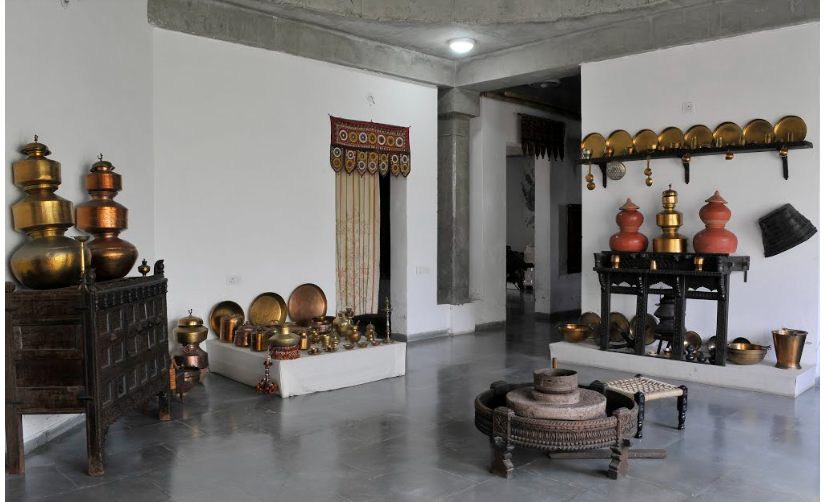
Beyond the textile tales, lies the stories of these women who have taken upon themselves to engage in an informal employment all the while fulfilling their familial duties as well as establishing themselves as makers of arts in India. The SEWA organized Hansiba Museum and Craft Resource Centre, a remarkable initiative that celebrates the artistry of women in the informal sector. It is an oasis of stitches and stories that showcases the weaves of grace, resilience and wisdom of generations.





